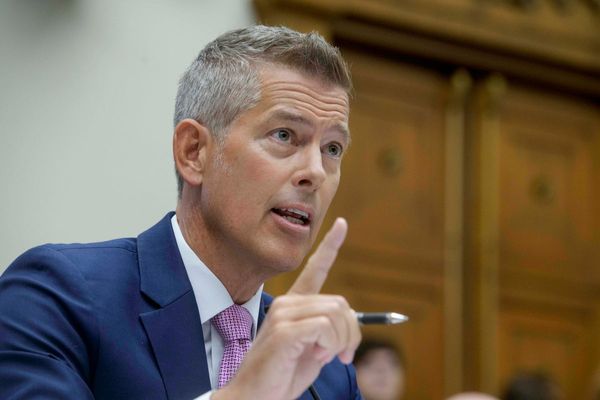Jerome Powell survived another sacking attempt Wednesday, as President Donald Trump continued relentless pressure on the Federal Reserve chair to cut interest rates. And if Trump fires Powell, there's little precedent to guide investors.
The stock market's reaction to headlines about a possible Powell firing have been restrained — perhaps a sign investors are skeptical Trump would go that far.
On Wednesday, the S&P 500 fell as much as 0.7% on reports that Trump planned to fire Powell. The index closed 0.3% higher after Trump quickly said he was "not planning" to oust the Fed chief. On April 17, however, the S&P 500 was little changed after Trump said Powell's "termination cannot come fast enough!"
Two sessions later, on April 22, the index rallied 2.5% as Trump said he had no intention to dismiss Powell. Optimism over tariffs also drove gains that day.
The bond market's reaction to Trump-Powell headlines has been muted. The 10-year Treasury yield lost three basis points to 4.454% Wednesday, after briefly erasing losses on the initial Trump-Powell report. It jumped more than five basis points April 17 and eased less than two basis points April 22.
Market Calm May Not Last
That calmness may disappear if the standoff intensifies.
Thierry Wizman, forex and rates strategist at global investment bank Macquarie Group, says a Fed that is fiscally compromised "augurs poorly for the short-term real returns on long-term nominal assets, insofar as long-term inflation expectations may rise, and stay elevated and 'sticky.'" Under that backdrop, the Treasury yield curve is now more prone to steepening than it is to flattening, he added in a note to clients.
Ipek Ozkardeskaya, senior analyst at Swissquote Bank said even if the Fed cuts rates, it's no guarantee yields will fall. "If markets perceive a policy mistake, yields could disconnect from the policy rate — that's called a loss of credibility," she commented Thursday.
Best IBD 50 Stocks To Watch
Meanwhile, the stock market could be of two minds, Wizman said. While it could sell off, some investors may also see a positive in lower borrowing rates, at least on the short end. If Wednesday's moderate sell-off after the Powell firing headlines was a test case, "it's not enough of a sell-off to dissuade Trump from firing Powell."
To be sure, if Powell is forced out, it would be a seismic change for the nation's financial leadership — one that would roil markets. The heads of major U.S. banks such as Goldman Sachs and Bank of America have rallied in support of the Fed staying insulated from political pressure.
"I think the independence of the Fed is absolutely critical," JPMorgan Chase CEO Jamie Dimon said in the bank's earnings call on Tuesday. "Playing around with the Fed can have adverse consequences, the absolute opposite of what you might be hoping for."
Powell's term as Fed chief ends next spring, so Trump would soon have a chance to name a replacement without major disruption.
The 1979 Fed And Trump-Powell Rift
What if Trump does fire Powell, or creates a "shadow Fed" to influence interest rates? Without a comparable historical case, investors have no playbook to follow.
Some strategists recall 1979, when President Jimmy Carter moved then-Fed Chair G. William Miller over to the Treasury Department and replaced him with inflation hawk Paul Volcker.
It wasn't quite the sacking that Trump is contemplating today, and the U.S. economy faced severe complications at the time, including an oil embargo from the Organization of Petroleum Exporting Countries.
But if the 1979 episode is any guide, the reactions of the stock and bond markets don't offer clear guidance for today's investors, at least in the short term.
How To Read Stock Charts
The S&P 500 climbed more than 6% from Aug. 6, 1979, the day Miller was replaced, until the index began a 10% correction in early October of that year. At that time, two months after the change at the Fed, Volcker pushed through a rate hike of a full percentage point and made other policy changes to bolster the banking system.
The 30-year Treasury yield — the benchmark rate at the time — was 8.92% the day Volcker took over. It swung into a moderate climb, St. Louis Fed data shows. The advance accelerated in October, taking the yield to 10.51% on Nov. 8, 1979. It peaked at 12.85% on Feb. 26, 1980.
Miller served as chair from March 8, 1978, to Aug. 6, 1979, a period in which the fed funds rate climbed from 6.79% to 10.94%, according to data from the St. Louis Federal Reserve Bank. (Under Volcker's rule, the fed funds rate peaked at 19.2% in June 1981.)
The U.S. dollar index fell 1.6% from August 1979 to the end of that year. It then surged 87% to a peak in February 1985 as yields kept rising.
Trump Vs. Powell Echoes The Burns Fed
Miller and his predecessor, Arthur Burns, took much of the blame for the rampant inflation of the 1970s and early 1980s.
President Richard Nixon had pressured Burns to keep interest rates low ahead of Nixon's reelection in 1972. Today, Trump's push for lower rates echoes that piece of history.
Burns eventually obliged. Economists say his decision sparked one of the highest bouts of inflation in the past century. The fever didn't break until 1982, when it fell to 6.1% on an annual basis after three straight years of double-digit gains in the consumer price index.
After Burns' term expired, Carter appointed Miller to head the Federal Reserve. He was an inflation dove at a bad time to be one.
"Unlike some of his predecessors, Miller was less focused on combating inflation, but rather was intent on promoting economic growth even if it resulted in inflation," says a historical account from the St. Louis Federal Reserve Bank. Miller believed the Fed should take measures to encourage investment instead of fighting rising prices. "He believed that inflation was caused by many factors beyond the Board's control."
Trump Vs. Powell May Head To Court
This week, strategists at UBS reminded clients that the courts, as in many of Trump unique efforts, may ultimately decide if Powell can be forcibly removed. In a May ruling, the Supreme Court specifically carved out the Federal Reserve as an exception to its ruling in favor of the President's power to dismiss federal officials.
"This seemingly sends a strong signal of independence for the Federal Reserve, protecting from executive branch removal the Chair of the Board of Governors of the Federal Reserve System, as well as the Governors themselves, though they were in less doubt than the Chair," UBS noted.
Current law allows the Fed chair to be fired "for cause," which the courts may be asked to define.
In recent days, White House officials and other Trump allies have played up the high cost of renovating the Federal Reserve building. That could be laying the groundwork for the president to justify ousting Powell.
Indexes As Guides For Trump-Powell Row
While a roadmap is difficult to trace in the event the Fed chief is fired, investors are not helpless. The major stock market indexes are the best guide for market direction, no matter the economic or political background.
Currently, the market is trending higher and in a power trend that calls for aggressive exposure. The S&P 500 and Nasdaq are making all-time highs, and the number of distribution days in each is modest. A sudden increase in distribution would be one warning sign for investors. An index break of the 21-day exponential moving average would be another.
Leading growth stocks continue to act well, with the Innovator IBD 50 ETF breaking out of a cup-with-handle base Thursday. Conversely, weak action by market leaders would sound an alarm for stock investors.
Read The Big Picture to stay abreast of market direction.







